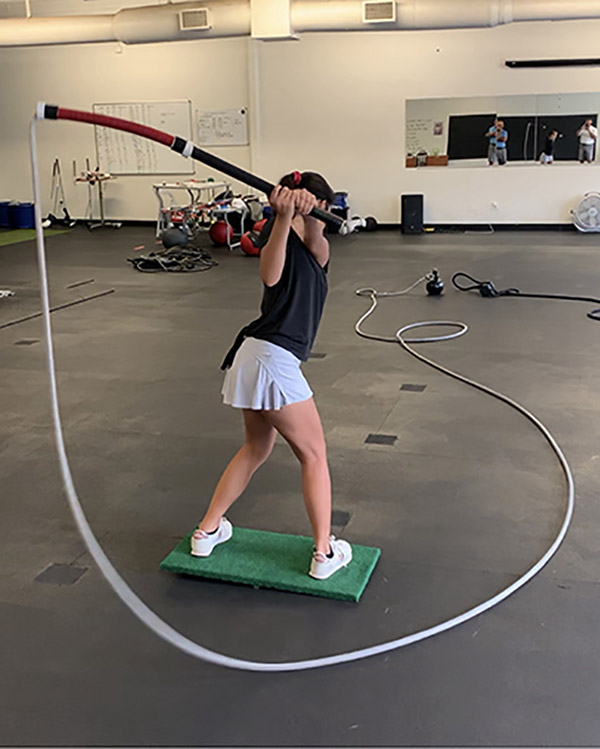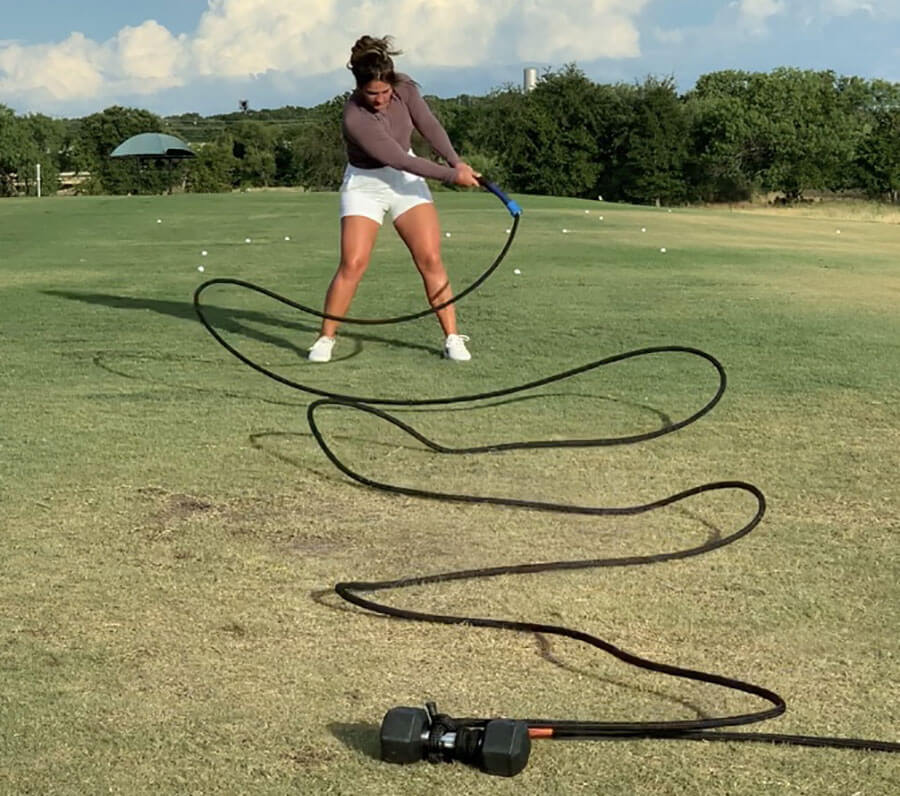
In the realm of golf, the pursuit of greater distance and power is a constant endeavor. While technique and strategy play crucial roles in achieving success on the course, one often overlooked factor holds immense potential for improvement: swing speed. Golf speed training, a specialized form of fitness training, focuses on enhancing the speed at which the clubhead swings through impact, translating directly into increased driving distance and overall performance.
Understanding Golf Speed Training: A Beginner’s Guide
Golf speed training encompasses a range of exercises and techniques designed to strengthen and condition the muscles involved in the golf swing, particularly the core, hips, and legs. These exercises aim to improve rotational power, flexibility, and overall strength, all of which contribute to generating greater clubhead speed.
Rotational power, the ability to rotate the torso and hips rapidly, is essential for generating force during the swing. Plyometric exercises, such as medicine ball slams and Russian twists, are effective in developing rotational power.
Flexibility and mobility, particularly in the hips, shoulders, and spine, allow for a full and unrestricted swing motion, maximizing power transfer. Stretching exercises and foam rolling techniques can enhance flexibility and reduce muscle tightness.
Strength and power in the legs and core provide the foundation for a powerful swing. Exercises like squats, deadlifts, and power cleans target these muscle groups, building strength and explosiveness.
Essential Golf Speed Training Exercises
To incorporate golf speed training into your routine, consider these effective exercises:
Rotational Power:
-
Medicine Ball Slams: Hold a medicine ball overhead, then slam it forcefully into the ground, engaging your core and hips.
-
Russian Twists: Sit on the ground with knees bent and feet off the floor, holding a medicine ball with arms extended. Rotate your torso from side to side, keeping your back straight.
-
Woodchoppers: Stand with feet shoulder-width apart and hold a weighted object (like a medicine ball or dumbbell) in both hands. Swing the object diagonally across your body, engaging your core and obliques.

Flexibility and Mobility:
-
Hip Flexor Stretches: Kneel on one leg and bring the other leg forward, flexing the hip of the bent leg. Hold for 30 seconds and repeat on the other side.
-
Shoulder Dislocates: With arms extended out to the sides at shoulder height, rotate your arms in small circles forward and backward, loosening shoulder joints.
-
Spine Rotations: Sit or stand with a straight back and slowly rotate your spine from side to side, reaching as far as you can comfortably.
Strength and Power:
-
Squats: Stand with feet shoulder-width apart and lower your body as if sitting in a chair. Push back up to the starting position, engaging your legs, core, and glutes.
-
Deadlifts: Stand with feet hip-width apart and hold a barbell or dumbbell in front of you. Hinge at the hips and lower the weight towards the floor, keeping your back straight. Lift the weight back up to the starting position.
-
Power Cleans: Stand with feet shoulder-width apart and hold a barbell on the ground in front of you. Quickly lift the barbell to your shoulders, then extend your arms overhead. Lower the barbell back down to the ground.
Remember: Proper form is crucial to prevent injuries and maximize results. Seek guidance from a certified golf fitness professional for personalized exercise instruction and training plans.
Incorporating Golf Speed Training into Your Routine
To effectively integrate golf speed training into your fitness routine, consider these guidelines:
-
Start Gradually: Begin with low-intensity exercises and gradually increase the weight, repetitions, and sets as your fitness level improves.
-
Prioritize Proper Form: Focus on proper form over lifting heavy weights. Incorrect form can lead to injuries and hinder progress.
-
Warm Up and Cool Down: Always warm up before each session with dynamic stretches and light cardio to prepare your body. Cool down afterward with static stretches to aid recovery.
-
Listen to Your Body: Pay attention to your body’s signals. If you experience pain or discomfort, stop the exercise and consult a healthcare professional.
-
Seek Professional Guidance: Consider working with a certified golf fitness professional who can create a personalized training plan tailored to your individual needs and goals.
-

Tips for Maximizing Golf Speed Training Results
To further enhance your golf speed training experience and maximize results, consider these tips:
-
Warm Up Properly: A thorough warm-up prepares your muscles for the rigors of training, reducing the risk of injury and improving performance.
-
Nutrition and Hydration: Maintain a balanced diet and stay hydrated throughout the day to support your body’s recovery and fuel your workouts.
-
Track Progress: Monitor your progress by recording workout details, such as weights, repetitions, and sets. This helps you adjust your training plan for continued improvement.
- Rest and Recovery: Allow your body adequate rest and recovery time between training sessions. This enables your muscles to repair and rebuild, leading to greater strength and power.

Beyond Speed: Enhancing Overall Golf Performance
While golf speed training plays a significant role in boosting driving distance, it’s important to remember that it’s just one piece of the puzzle. Here are some additional aspects of golf training to consider:
-
Swing Mechanics Instruction: Proper swing mechanics ensure efficient power transfer from your body to the clubhead. Lessons from a qualified golf instructor can refine your swing technique and maximize the benefits of your speed training.
-
On-Course Practice and Strategy: Take your training to the course! Practice hitting balls and develop strategic shot selection to improve your overall game.
-
Mental Game Training: The mental aspect of golf is crucial. Techniques like visualization and positive self-talk can enhance your focus, confidence, and performance under pressure.
Conclusion
By incorporating golf speed training into your regular fitness routine, you can unlock a hidden reservoir of power in your swing, translating to increased driving distance and potentially lower scores on the course. Remember, consistency, proper form, and a holistic approach to golf training are key ingredients for success. So, unleash your inner power, commit to the training, and witness the positive impact on your game! The next time you step onto the tee box, you’ll be swinging with newfound confidence and power, ready to conquer the course.
- Rest and Recovery: Allow your body adequate rest and recovery time between training sessions. This enables your muscles to repair and rebuild, leading to greater strength and power.